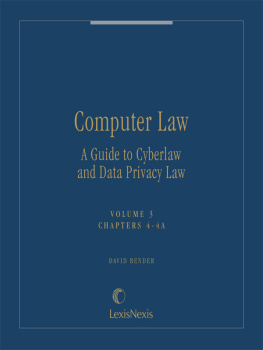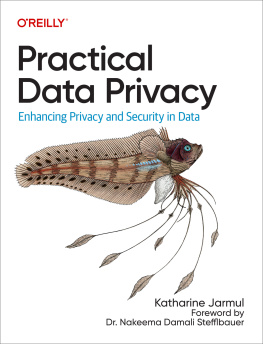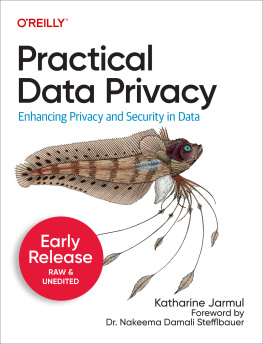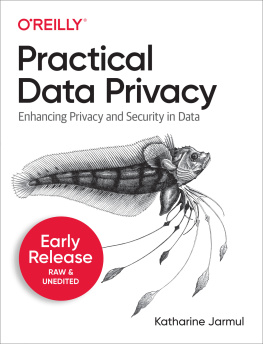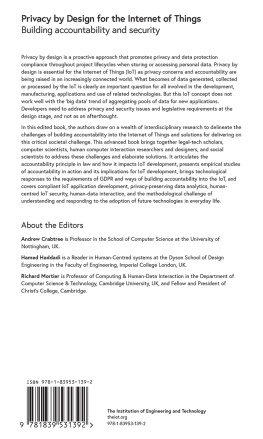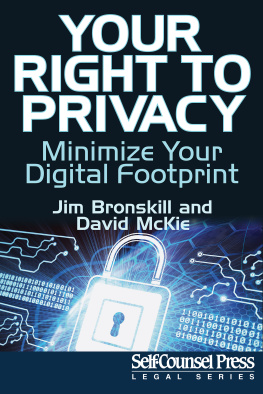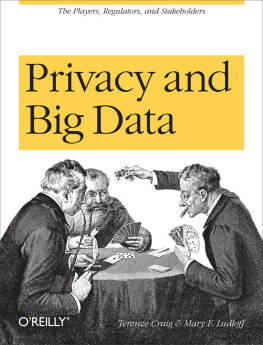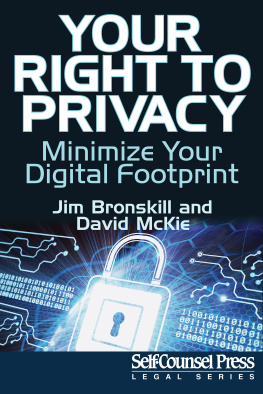COMPUTER LAW
A Guide to Cyberlaw and Data Privacy Law
Volume 3
David Bender
Dobbs Ferry, NYQUESTIONS ABOUT THIS PUBLICATION?
For questions about the Editorial Content appearing in these volumes or reprint permission, please call:
Daniel D. Cutler, J.D.
Email... daniel.cutler@lexisnexis.com
Phone... 1-303-681-0366
Valri Nesbit, J.D., LL.M.
Email... valri.nesbit@lexisnexis.com
Phone... 1-800-424-0651 (ext. 3343)
For assistance with replacement pages, shipments, billing or other customer service matters, please call:
Customer Services Department at
...(800) 833-9844
Outside the United States and Canada please call
...(908) 464-6800
Fax Number
...(518) 487-3584
Customer Service Website
...http://www.lexisnexis.com/custserv/
For information on other Matthew Bender publications, please call
Your account manager or
...(800) 223-1940
Outside the United States and Canada, please call
...(518) 487-3000
Library of Congress Card Number: 78-50956
ISBN: 978-0-8205-1068-2 (print)
ISBN: 978-1-5791-1394-0 (eBook)
Cite this publication as:
[Vol. no.] David Bender, Computer Law: A Guide to Cyberlaw and Data Privacy Law, [sec. no.] (Matthew Bender, Rev. Ed.)
Example:
1 David Bender, Computer Law: A Guide to Cyberlaw and Data Privacy Law, 2A.03[8][a] (Matthew Bender, Rev. Ed.)
This publication is designed to provide authoritative information in regard to the subject matter covered. It is sold with the understanding that the publisher is not engaged in rendering legal, accounting, or other professional services. If legal advice or other expert assistance is required, the services of a competent professional should be sought.
LexisNexis and the Knowledge Burst logo are registered trademarks of Reed Elsevier Properties Inc., used under license. Matthew Bender and the Matthew Bender Flame Design are registered trademarks of Matthew Bender Properties Inc.
Copyright 2015 Matthew Bender & Company, Inc., a member of LexisNexis. Originally published in: 1978
All Rights Reserved.
No copyright is claimed by LexisNexis or Matthew Bender & Company, Inc., in the text of statutes, regulations, and excerpts from court opinions quoted within this work. Permission to copy material may be licensed for a fee from the Copyright Clearance Center, 222 Rosewood Drive, Danvers, Mass. 01923, telephone (978) 750-8400.
Editorial Offices
630 Central Ave., New Providence, NJ 07974 (908) 464-6800
201 Mission St., San Francisco, CA 94105-1831 (415) 908-3200
www.lexisnexis.com
Terms of Use
Your use of this electronic publication (eBook) from LexisNexis, a division of Reed Elsevier Inc., a Massachusetts corporation, is subject to the following terms and conditions. This eBook is for your personal use only. All access to and use of this eBook is subject to U.S. and international copyright law. All intellectual property rights are reserved to the copyright holder. Redistribution or duplication of this eBook to any other electronic media or a third party is strictly prohibited. Under no circumstances may you redistribute this eBook commercially or post this eBook on an intranet, internet or SharePoint site. Finally, use of this eBook is further subject to the terms and conditions of use which were accepted at the time you completed your purchase of this eBook from the point of purchase.
Hyperlink Key
In order to distinguish between the links to other sections within LexisNexis eBooks and external links to the Internet, we have added color coding to the links.
Following is a color key for the links:
Blue: Links inside the eBook
Green: External links to LexisNexison-line and the Internet
A COMPLETE SYNOPSIS FOR EACH CHAPTER APPEARS AT THE BEGINNING OF THE CHAPTER
COPYRIGHT PROTECTION
OF SOFTWARE
SYNOPSIS
Although the Supreme Court has not yet spoken, the consensus is that programs are copyrightable, that copyright extends to source and object codes, system and application programs, and that a chip or disc embodying object code is a copy.
Most, if not all, of the issues impacting copyright protection of programs are unsettled. Despite the cascade of cases in the past few years, there is no uniformity of judicial thinking on even those issues reached. Moreover, to the extent agreement seems to exist, in some instances it may be skin-deep, for as detailed rationale is probed, dissimilarities may appear.
The weight of what judicial authority exists is to the effect that programs constitute copyrightable subject matter; that copyright extends to object as well as source code; that system, as well as application programs are copyrightable; and that a ROM or disc embodying object code constitutes a copy, and is subject to copyright law. None of these issues has reached the U.S. Supreme Court.
SOFTWARE INFRINGEMENT AND MAINSTREAM COPYRIGHT LAW
This article is directed to the protection of computer programs by means of copyright, and specifically to the infringement issue. Where are we, where have we been, and where are we going?
In exploring these questions, I propose first to identify what I see as the major problems in this area. Next, I want to comment briefly on the light shed by the cases. And finally, I want to offer my own conclusions as to where all this leaves us.
In applying copyright to programs, there are two related problems, often confused with each other. These are the idea/expression problem and the use/copying problem. As its name indicates, the first of these goes to the issue of where ideanot protectable by copyrightends, and where expressionprotectable by copyrightbegins. In the program scenario, this is not an easy line to draw. But while this problem may be more apparent in the program area than in most others, it is far from unique to programs and indeed is generic across the broad spectrum of copyrightable subject matter. For example, how close to the detailed plot of a book can one tread without infringing the copyright in the book?
So drawing the line in the program milieu, is conceptually the same as it is in the case of other types of copyrightable works. However, for programs it may be more difficult to make the actual determinations necessary to decide particular cases. Perhaps this is partly due to the nature of a program. It is certainly due to the unfamiliarity which most judges and juries have with programs. What do the cases say?
A good starting point here is the Whelan decision handed down last year by the Third Circuit. To be sure, it displays a certain degree of vagueness and imprecision in discussing some technical points necessary in drawing the line. It also adopts a stilted view of what constitutes the idea to be distinguished from expression under copyright law. But Whelan adopts a very useful tool in making its idea/expression distinction: It sets forth the various steps involved in creating a program, from problem identification through coding and beyond. Such a progression, with each step embodying more detail and precision than the one preceding it, is critical to developing a basis for drawing the line.



